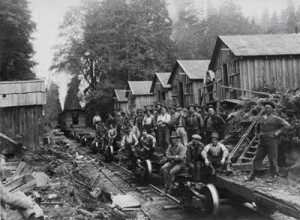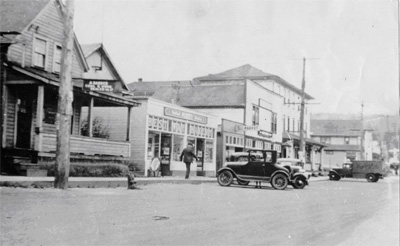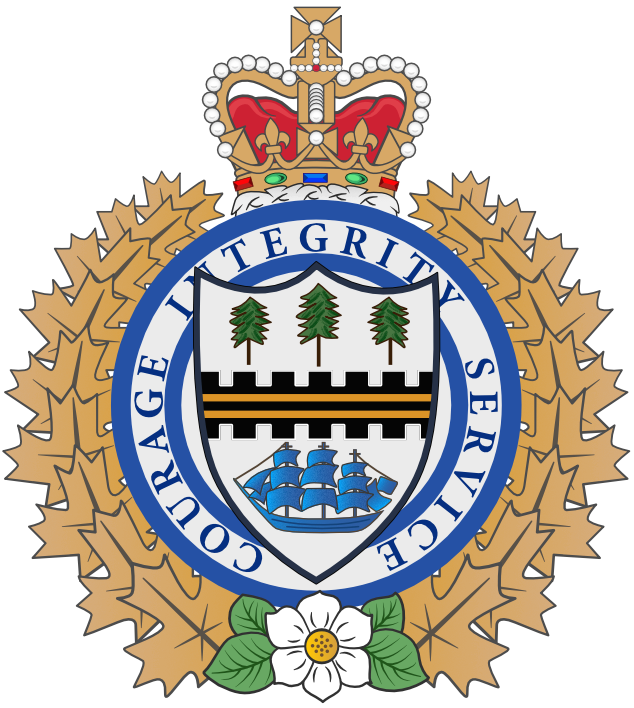History
The City of Port Moody is located at the head of the Burrard Inlet and at the foot of Eagle Mountain. Cities bordering on Port Moody are Coquitlam and Burnaby and the communities of Anmore and Belcarra. Geographically, the City of Port Moody is located an easy 40 minute drive from both downtown Vancouver and the US border.
The early inhabitants of this area were the Squamish and Musqueam bands of the Coast Salish people; their ancestors having occupied the Lower Mainland for the past 8,000 years. The area of what is now Port Moody was used by the Salish people to fish, hunt, and gather shellfish.
Non-indigenous people began to occupy the area around 1800. Their primary attraction to this area was the fur trade and as a transition point to the interior or ship transportation.
With the Cariboo Gold Rush in 1858, there was a desire to develop a ‘back-door’ defense option to protect the City of New Westminster. In 1859, the Royal Engineers arrived to develop a trail system between New Westminster and what is now known as Port Moody. The Royal Engineers were commanded by Colonel Richard Moody. He quickly realized the military importance of establishing this trail. The trail which they constructed is now a major traffic artery: Clark Street in Port Moody; North Road in Coquitlam; and Columbia Street in New Westminster.
By completing this trail, ships would anchor in Burrard Inlet to unload military supplies and personnel if New Westminster was attacked by the Americans. No attack actually ever took place.
The original town site for Port Moody, named in honour of Colonel Richard Moody, was a cluster of tents and shacks. In 1886, Port Moody was named as the original Pacific terminus of the transcontinental railway. With this announcement came the construction of the railroad lines and a harbor which proved ideal for many light to heavy industries.

Based on this announcement and construction, the town experienced an influx of new residents. Population grew from 200 people in 1887 to 1,200 in 1910.
When the City was incorporated in 1913, City Council decided to establish its own police department. Mr. C.A. Mills was appointed to the position of Chief Constable of a one person Police Department. In the same year, the City Hall was constructed and the jail was moved from the old Canadian Pacific Railway Station to the basement of City Hall located at 2425 St. Johns Street.
Chief Constable Mills’ duties were fairly simple in the early days and included patrolling the streets, chasing tramps out of the town, keeping the children in line, and chasing loose animals back to their owners. When he required assistance, the Chief Constable would seek the assistance of a British Columbia Provincial police officer from New Westminster.

The gentleman shown in the above photograph is that of Chief Constable Thomas Mackie – estimated date 1936.
As the City grew, so did the police department. In the mid 1960’s a new building was constructed at 2718 St. Johns Street for the police department, volunteer fire department and City Council chambers. Apparently the building was given the go ahead after the policemen on duty ran out of room at the City Hall jail and handcuffed several persons to the flag pole.
The City continued to grow and again the Department found they were short on space. In 1982, a referendum was put before voters. It passed and a new building was constructed at 3051 St. Johns Street. This land was sold to the City for one dollar as it was the property of the BC Forest Service. The only condition was that the land must be used for the City emergency services.
This would be the fourth location the police department worked out of since opening February 24, 1986. Money was short and to save funds, two of the cellblock doors were taken from the old office at 2718 St. Johns Street and used in the new cell area. These cell doors are still in use today.
In 2006, the Department again found more room was needed and another new building was constructed next door keeping the same address, 3051 St. Johns Street. The old cellblock was very well built and continues to serve as a lockup.
The following were employed as Police Chief:
| Chief Constable | Term of Appointment | ||
|---|---|---|---|
| C.C. Mills | 1913 | to | 1922 |
| Thomas Mackie | 1922 | to | 1939 |
| George Helmsing | 1939 | to | 1942 |
| T. Davis | 1942 | to | 1946 |
| A.W. Kruger | 1946 | to | 1960 |
| A.D. Kupkee | 1960 | to | 1967 |
| E.C. Millard | 1968 | to | 1969 |
| L.A. McCabe | 1970 | to | 1986 |
| G.W.G. Laughy | 1987 | to | 1992 |
| R.C. Singbeil | 1993 | to | 1998 |
| D.W. Stuckel | 1998 | to | 1999 |
| P.J. Shrive | 1999 | to | 2008 |
| B. Parker | 2008 | to | 2013 |
| C. Rattenbury | 2013 | to | 2017 |
| D.Fleugel | 2017 | to | Present |

